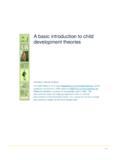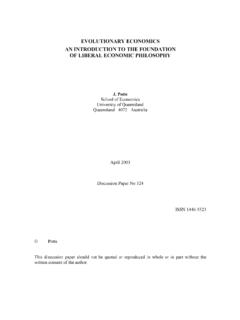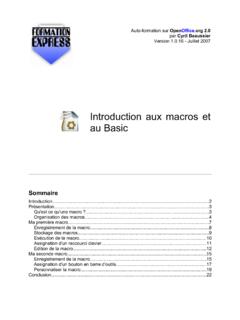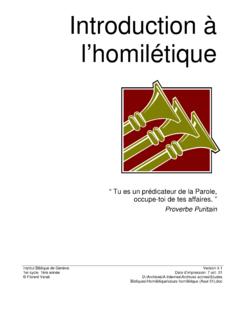Transcription of Timbercrete
1 Timbercrete . Timbercrete . An introduction Version 3. 2015 Timbercrete Pty. Ltd. Image Courtesy of AD Architecture NZ. What is Timbercrete ? Timbercrete is an award-winning, environmentally sensitive building material that has many advantages over clay and concrete bricks. Whether used as bricks, blocks, panels or pavers, its comprehensive performance and benefits to the environment are impressive. This unique product can be moulded or pressed into a vast range of sizes, shapes, colours and textures. It can be used for residential, industrial and commercial construction, as well as landscaping and a range of other applications. Please read on to discover how Timbercrete stands out from the rest of the products on the market. Timbercrete is the only structural brick or block product on the Australian market that traps carbon which would normally end up as greenhouse gases in our atmosphere. It has substantially lower embodied energy compared to clay fired bricks.
2 It has a higher insulation value (R) in comparison with traditional solid masonry bricks blocks and panels. It has a workable thermal mass which is the ability to store thermal energy and release it slowly. It boasts unique and in some situations improved engineering qualities such as better resilience and improved breaking load resistance compared to unreinforced clay and concrete products (as tested). Lighter weight (up to X lighter than concrete or clay). Unique workability, it can be nailed and screwed into just like timber, but retains all the advantages of conventional masonry. Higher fire resistance at 190 mm thick, outperforming typical concrete blocks, clay, timber and steel construction. It has the highest possible fire rating exceeding FRL240/240/240. This ground-breaking innovation is an Australian invention and proudly Australian owned. It has several international patents (PCT) and trademark protection granted in most of the world's population.
3 Granted Australian patents include numbers: 531909, 2010227105, and 201020365, along with several patents pending. Timbercrete : An introduction - V3 | 2015 Timbercrete Pty. Ltd. 1. What is Timbercrete Made Of? Timbercrete is made of a unique blend of cellulose (timber waste), cement, sand, binders, and other materials. Recycled Waste As the name suggests Timber-crete is made primarily from timber waste such as sawdust or recycled timber from discarded pallets and the like. No trees have been cut down specifically to produce Timbercrete . Instead, we use the excess sawmill waste from plantation timbers that would otherwise be burnt or used in a form that would cause it to degrade, releasing greenhouse gases into our atmosphere. Other Ingredients Sand - Sand is carefully selected (sometimes blended) to maximise its load bearing capacity (MPA) and minimise water ingress. Binders - Cement binders, such as Portland cement or other cementitious material, along with a special non- toxic deflocculate and other products that improve density and cement performance.
4 These products also aid as a waterproofing agent. Environmentally Friendly Timbercrete is very environmentally friendly all the way from its raw ingredients through to its everyday use. Its main ingredient is recycled timber waste (cellulose). It has significantly lower embodied energy, and acts as a carbon trap. On top of all this, its improved insulation qualities mean Timbercrete homes are more energy efficient throughout the year. Carbon Trap Timbercrete 's main ingredient is cellulose, such as sawdust. This is often used for producing fertilisers, as floor cover in horse stables, or is simply discarded or burnt. All of these uses have a negative impact on our environment, because as the product breaks down, it releases carbon dioxide gas into the atmosphere. This is referred to as greenhouse gases . When used for Timbercrete however, this vicious cycle is stopped because Timbercrete acts as a carbon trap, when the cellulose waste is preserved within a concrete tomb and never breaks down.
5 Lower Embodied Energy Due To: No Kiln Firing Timbercrete does not need to use artificial or man-made drying processes. Conventional clay bricks require firing for strength and durability. This process consumes a large amount of energy and the toxic by-product is a poisonous cocktail of sulphuric, carbon monoxide and carbon dioxide gases. Energy use during manufacturing - To manufacture 1m2 of wall area, Timbercrete uses far less equipment and energy than other traditional brick and block making systems in its production process. Energy to attain raw materials - Wherever practically possible Timbercrete utilises locally sourced raw materials. Timbercrete : An introduction - V3 | 2015 Timbercrete Pty. Ltd. 2. Performance Timbercrete 's unique density and matrix achieve improved acoustic and thermal insulation qualities compared to conventional bricks. It has unique resilience and a good load-bearing capacity, yet allows you to nail or screw into it like timber.
6 Blocks are typically larger and lighter, resulting in construction being easier and faster. (Comparison data can be provided upon request). Density and Matrix Timbercrete 's dry density can be altered to suit specific requirements, ranging from 900 kg/m to 1500 kg/m . Standard or typical Timbercrete Is approximately kg/L . Its density is similar to water, followed by hardwood timber. Sound Qualities Airborne sound transmission loss 100 mm to 110 mm thick Concrete and clay masonry performs well at preventing airborne sound transmission with an Rw rating of approximately 44 and 49 respectively, with 100mm (low density) Timbercrete being slightly less with an Rw rating of 41. While still to be tested, one can reasonably assume that a slightly higher density Timbercrete will result in a higher Rw rating. However, 100mm Aerated concrete blocks performs less than all the above mentioned products at Rw rating of 38. Sound absorption Timbercrete outperforms higher density clay and concrete bricks with a weighted sound absorption coefficient.
7 Of and a noise reduction coefficient (NRC) of whereas typical clay and concrete products have an approximate NRC of Timbercrete provides better resistance to airborne sound transmission then aerated concrete while providing less deflecting sound than higher density clay and concrete. (Refer to test results on website). In summary Timbercrete performs well at preventing sound transmission while having a sound absorbent quality which in effect helps to reduce echo or the noisy room phenomena. Load-bearing Capacity Timbercrete has a good load-bearing capacity. The formula can be altered slightly to achieve specific engineering requirements. Load-bearing typically ranges from 5 MPA through to 15 MPA or potentially greater if necessary. At 5 MPA a single standard 400 long X 200 mm thick Timbercrete block can load-bear up to 40 tonnes. Timbercrete : An introduction - V3 | 2015 Timbercrete Pty. Ltd. 3. Ease and Simplicity of Building Tradesmen enjoy working with Timbercrete because it is lightweight, coming in at only 1,100kg/m3 (approximately).
8 This is less than half the weight of traditional concrete or clay products, (2,400kg/m3) which makes Timbercrete much easier to handle. Timbercrete can be nailed and screwed without the need for pre-drilling. It is just like nailing into a piece of timber. This makes life simple when it comes to attaching various fixtures to the walls. Unlike other lightweight building products such as aerated concrete, nails and screws in Timbercrete stay fixed. As easy as working with timber Drilling any size hole is easy Timbercrete is Bullet-proof Timbercrete (tested in the US) was subjected to ballistic tests using a range of calibre projectiles. Tests showed that Timbercrete blocks absorbed the projectiles instead of shattering like concrete blocks. To date no bullet has ever been able to penetrate through a 200mm Timbercrete brick. Astonishingly even a 50 calibre armour piercing bullet only penetrated 50 mm into Timbercrete . The photo below shows a typical 200 mm thick Timbercrete single skinned cobblestone block.
9 The block above was hit multiple times by several different calibre weapons. Depth of penetration is depicted by coloured pens. GREEN..44 magnum full metal jacket fired from RED..45 magnum hollow point fired from BLUE..50 Calibre full metal jacket (Sniper) fired from PURPLE. SKS47 full metal jacket fired from Note: .50 calibre sniper bullets are designed to blow through an engine block from nearly a mile away! Tests have demonstrated that a single shot from any of these weapons (as well as a small-load .22 calibre) will blow apart all traditional masonry products such as concrete blocks or clay fired bricks. Softer aerated or autoclaved masonry blocks seem to offer no resistance at all, even against a .22 calibre rifle. Timbercrete : An introduction - V3 | 2015 Timbercrete Pty. Ltd. 4. Thermal Efficiency Superior Insulation R Value Comparison Timbercrete will always thermally outperform traditional or non-traditional higher density products when comparing like for like regardless of wall thickness.
10 Timbercrete has a lower density and therefore higher insulation value (R value) than clay fired bricks, mud bricks, rammed earth, concrete and concrete blocks. Peter Collier the inventor of Timbercrete has also developed a range of patented wall systems. It is his professional opinion that Timbercrete products such as the patented Super Insulating Series Block will provide a superior overall thermal performance compared to any other wall system developed within Australia. He is also convinced that the soon to be released Timbercrete Insulating Cladding Panel will thermally outperform any other cladding product in the Australian market. Timbercrete has a range of blocks, bricks and panels with varying thickness from 50mm up to 300mm. The patented Super Insulator Block (Patent No 531909), can achieve an insulation rating of approximately R along with a workable thermal mass and the cladding panel has a calculated R-value of approximately R with no other insulation required in the wall.


![naray[sU´m [Narayana Suktam] Introduction - …](/cache/preview/2/c/f/7/f/6/4/f/thumb-2cf7f64f54385035062820f105924f4c.jpg)





